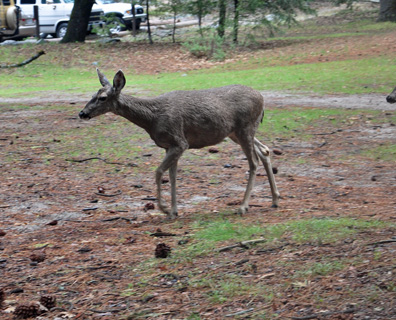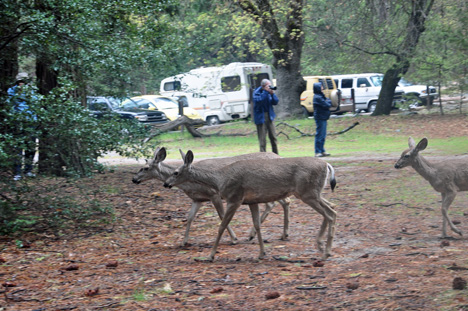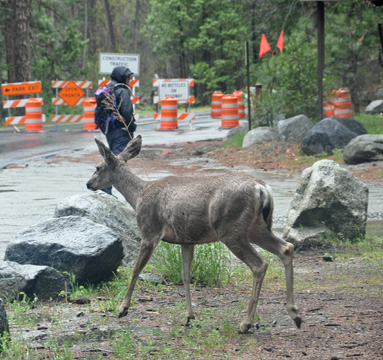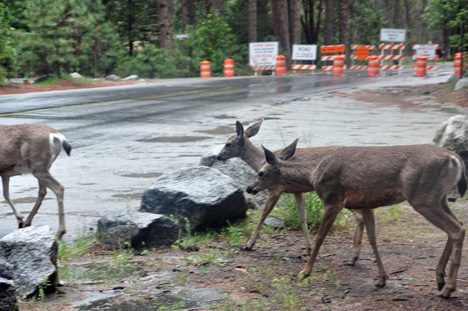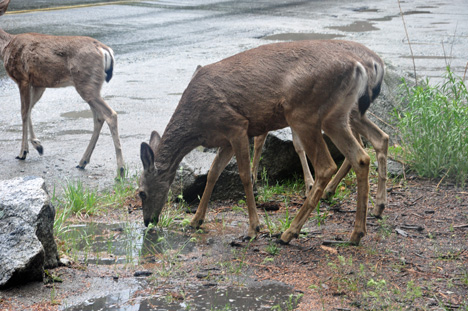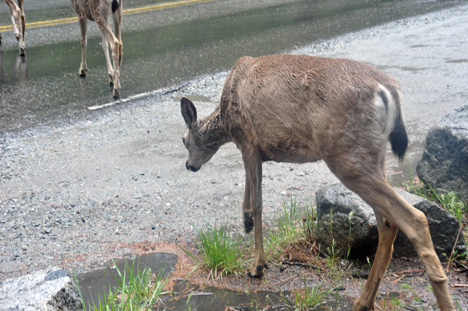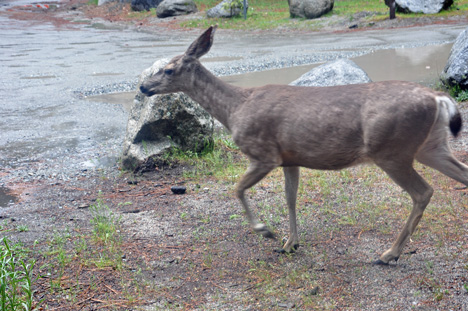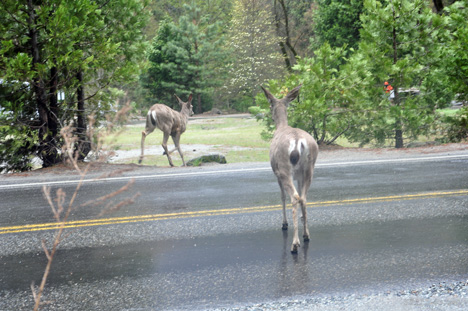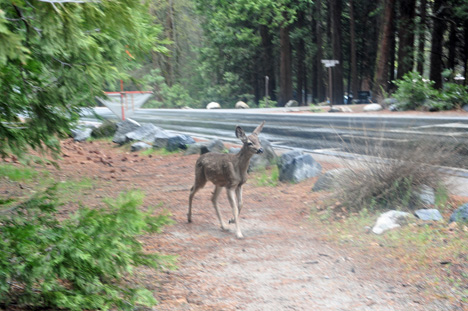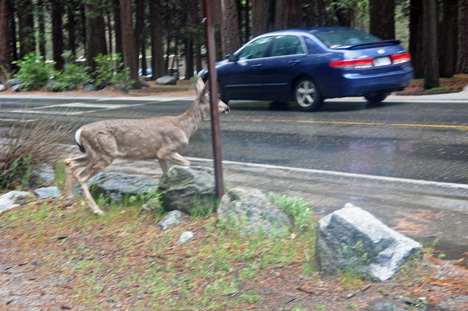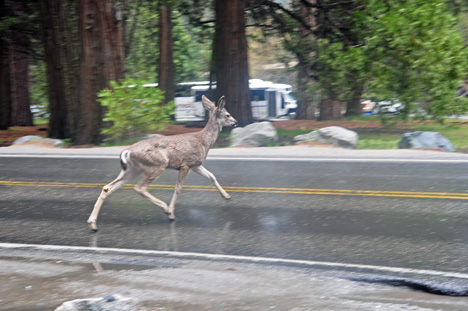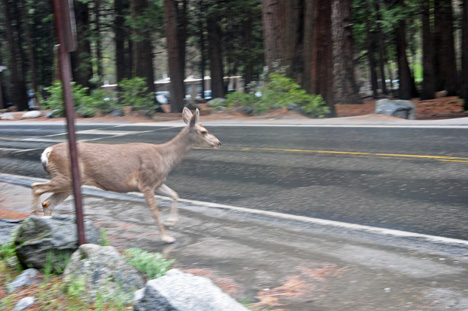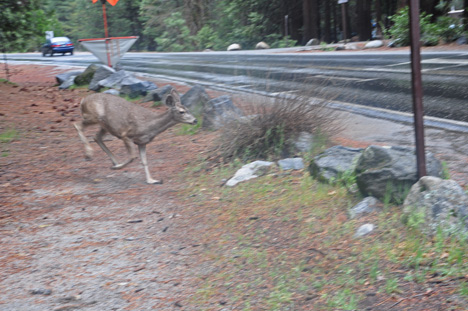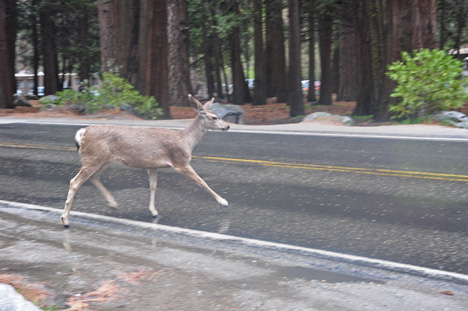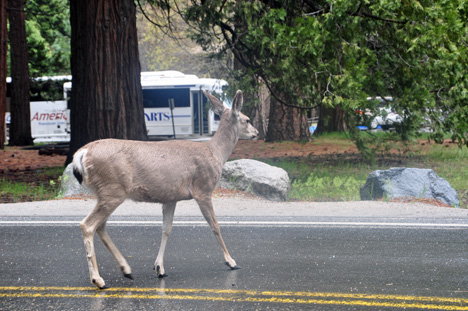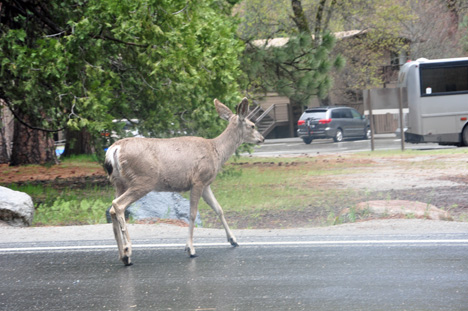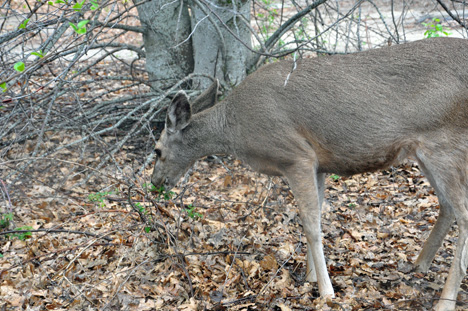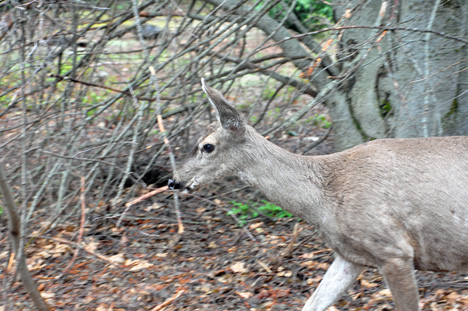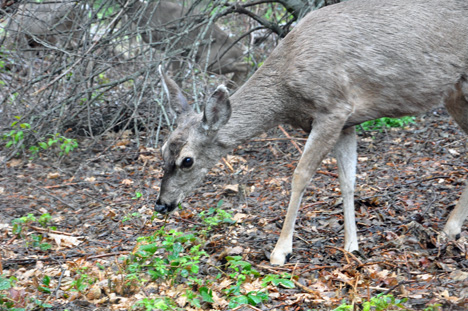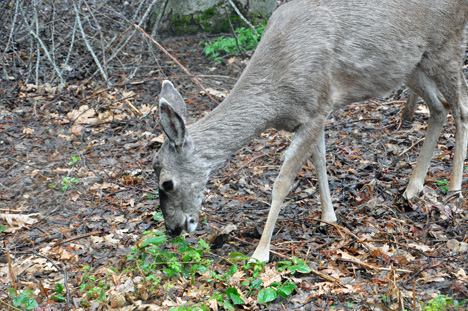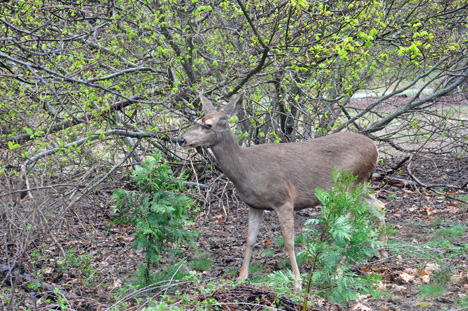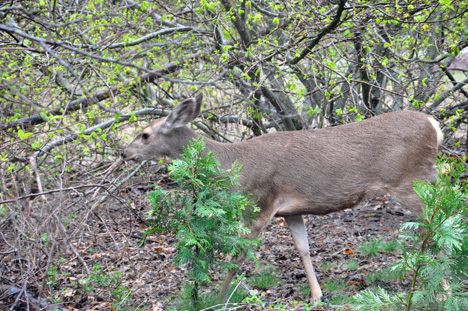Yosemite is one of the largest and least fragmented habitat blocks in the Sierra Nevada, and the park supports a diversity of plants and animals. The park has an elevation range from 2,000 to 13,114 feet and contains five major vegetation zones: chaparral/oak woodland, lower montane, upper montane, subalpine, and alpine. Of California's 7,000 plant species, about 50% occur in the Sierra Nevada and more than 20% within Yosemite. There is suitable habitat or documentation for more than 160 rare plants in the park, with rare local geologic formations and unique soils characterizing the restricted ranges many of these plants occupy.
The geology of the Yosemite area is characterized by granite rocks and remnants of older rock. About 10 million years ago, the Sierra Nevada was uplifted and then tilted to form its relatively gentle western slopes and the more dramatic eastern slopes. The uplift increased the steepness of stream and river beds, resulting in formation of deep, narrow canyons. About 1 million years ago, snow and ice accumulated, forming glaciers at the higher alpine meadows that moved down the river valleys. Ice thickness in Yosemite Valley may have reached 4,000 feet during the early glacial episode. The downslope movement of the ice masses cut and sculpted the U-shaped valley that attracts so many visitors to its scenic vistas today.
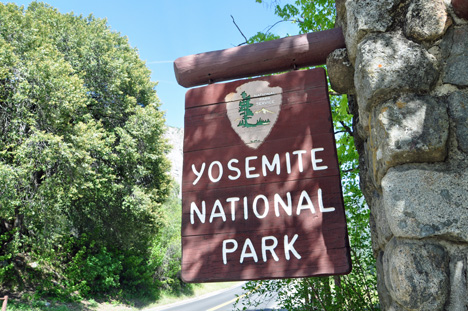





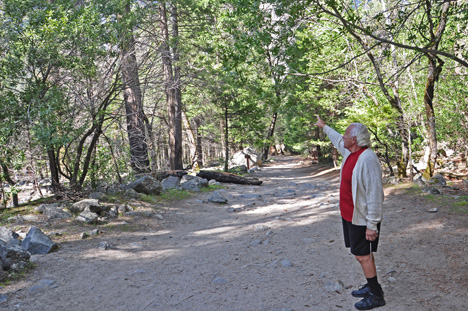



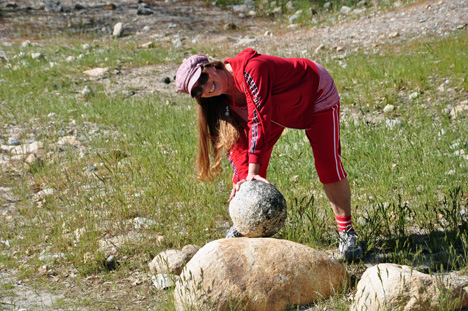
 Lee
Duquette thought he was riding a horse - until Karen Duquette told him
that it did not move! "Duh" he said.
Lee
Duquette thought he was riding a horse - until Karen Duquette told him
that it did not move! "Duh" he said.
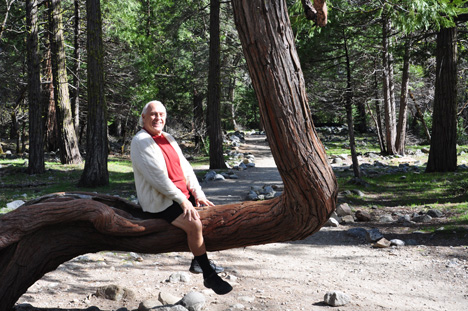

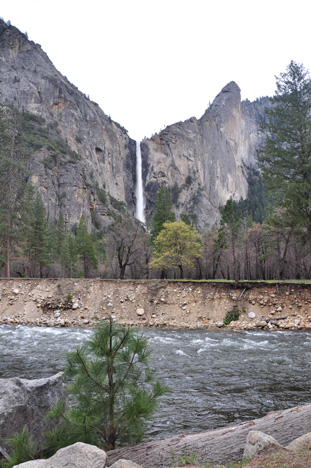
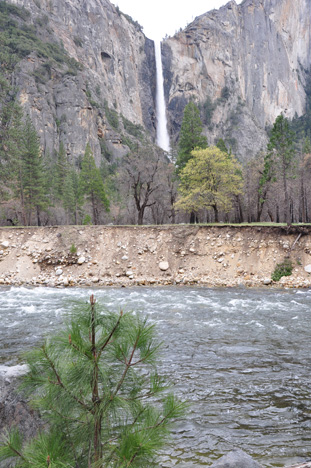


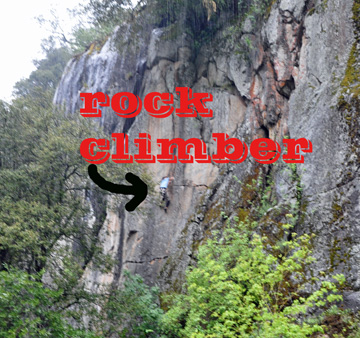
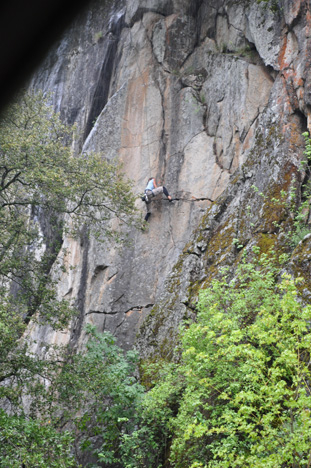
The Merced River is protected under the National Wild
and Scenic Rivers Act. It is free flowing until Lake McClure tends
to flood in the winter and spring, and then reduce to a mere trickle in
the late summer and fall. In April and May, the Class III-IV Whitewater
on the Merced is first class, the stuff of avid paddlers and winter
daydreams. For the rest of the Whitewater season, the Merced churns with
bold wave trains and slick chutes friendly to rafters of all levels.
Highway 140 runs along part of the Merced River and is the main road into
Yosemite National Park.
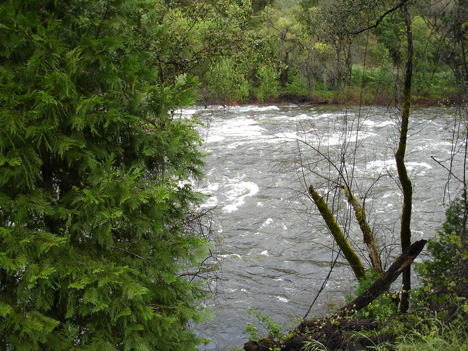



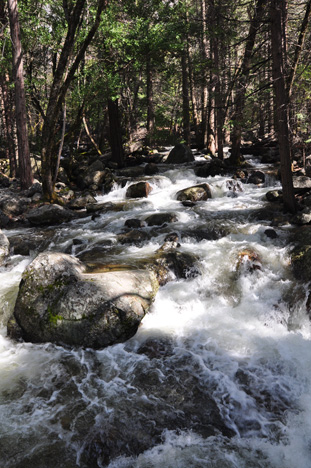
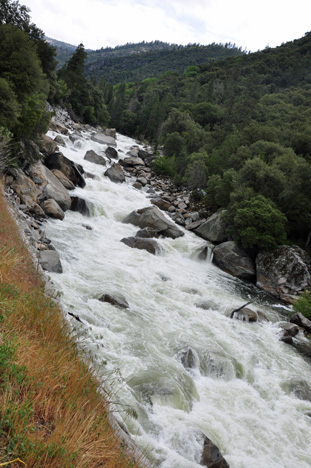
Did You Know? The Merced River was designated a National Wild and Scenic River in 1987. Eighty-one miles of river runs through Yosemite National Park, including a stretch in Yosemite Valley.








